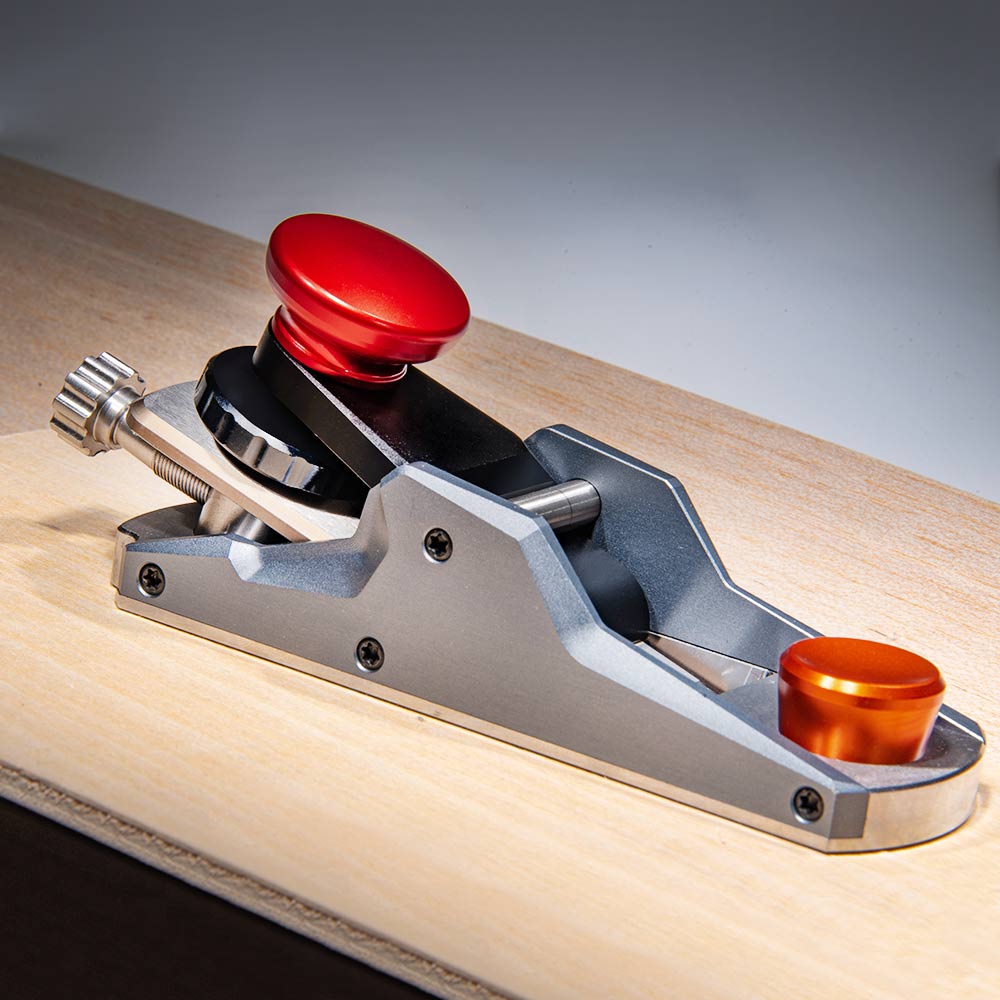A block plane is a versatile hand tool used in woodworking for a variety of tasks. It is a small, compact plane that is designed to be held in one hand, making it easy to maneuver and control. The block plane consists of a sharp blade or iron set at a low angle to the sole of the plane. This low angle allows the block plane to excel in certain applications, making it a valuable tool in a woodworker's arsenal.
One of the primary uses of a block plane is for end grain work. End grain refers to the cut ends of wood fibers, which are more porous and prone to splintering. The low angle of the block plane's blade helps to minimize tear-out and splintering when planing across end grain. This makes the block plane ideal for tasks such as chamfering or beveling the edges of boards, trimming small pieces, or fitting joints.
The block plane is also commonly used for smoothing and leveling surfaces. Its small size and maneuverability make it well-suited for working on small or intricate areas, such as smoothing the edges of a joint or removing small imperfections on a workpiece. The block plane can quickly and effectively remove material, leaving behind a smooth and even surface.
Another application of the block plane is for fitting and adjusting joinery. It can be used to fine-tune the fit of mortise and tenon joints, dovetail joints, and other types of joinery. By carefully removing small increments of material with the block plane, woodworkers can achieve a precise fit and ensure that the joints are tight and flush.
In addition, the block plane is often used for shaping and rounding edges. Its compact size allows for more control and precision when working on curved or irregular surfaces. With the block plane, woodworkers can create smooth and consistent curves, bevels, or chamfers on the edges of tabletops, cabinet doors, or other woodworking projects.
The block plane is also useful for removing paint, varnish, or other finishes from wooden surfaces. By adjusting the blade projection and using light, controlled strokes, the block plane can effectively strip away old finishes without damaging the underlying wood. This can be particularly handy when restoring or refinishing furniture or other wooden objects.
Furthermore, the block plane can be used for fitting and trimming door edges. When a door rubs against its frame or sticks when opening or closing, the block plane can be used to shave off small amounts of wood from the edge of the door, allowing it to fit properly and function smoothly.
It's worth noting that there are different types of block planes available, each with its own specific design and features. For example, a standard block plane is typically used for general-purpose tasks, while a low-angle block plane has a blade set at an even lower angle, making it more effective for end grain work and reducing tear-out.
In conclusion, the block plane is a versatile hand tool that finds its place in various woodworking applications. From smoothing and leveling surfaces to fitting joinery, shaping edges, and removing finishes, the block plane offers precision, control, and convenience. By mastering the techniques and using the block plane effectively, woodworkers can achieve professional-level results in their projects.


